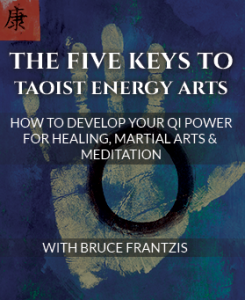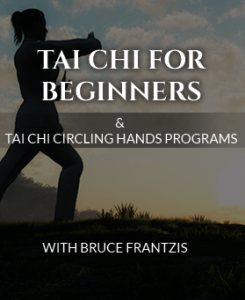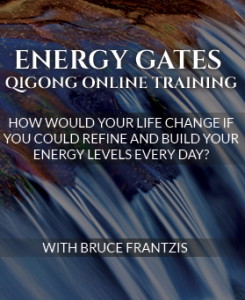You Can Learn Tai Chi
Although tai chi/taiji is not especially easy to learn, it is not the most difficult exercise to do either. Half of China’s 200 million people who successfully learned and currently do tai chi every day began after age fifty. If they can learn, so can you.
Some degree of challenge makes most recreational activities more fun, interesting and alive. But all worthwhile activities that produce both short- and long-term benefits usually have continuing challenges.
People who practice tai chi/taiji well make it look easy and effortless. But the truth is tai chi is not especially easy to learn. An interesting point about learning anything of value, including tai chi, is “things are difficult when you can’t and easy after you can.”
The road to attaining such a wonderful degree of fluid, smooth, and relaxed movements requires much patience and effort just as any sport or art form.
Tai Chi is a Sophisticated, Integrated Whole-body Movement
Tai chi/Taiji is one of the most sophisticated methods of integrated whole-body movement that humans have created. All parts of your body are supposed to move together at the same relative speed. In all movements, no matter how tiny, ideally each individual joint is directly and simultaneously linked to and moves in coordination with every other joint in the body.
It is quite normal to feel some emotional unpleasantness, especially as you begin to really notice, often for the first time, what stress is doing to your nervous system, or how unquiet and devoid of inner peace your mind and emotions really are. For everyone part of learning tai chi/taiji is recognizing the subtle tensions within your body and mind. This can “freak you out” as you may not be able to believe the degree of unconscious tension you and virtually everyone else you know holds. Although practice empowers you to learn to let go of your physical tension, it can be a real shock to recognize each more profound personal level of emotional and mental tension hidden beneath.
At first it may be difficult to practice on your own. It is best not to feel guilty about this; just accept your limitations rather than quitting.
Your sense of progress will not be a constant upward curve. Tai chi/Taiji tends to be more of a zigzag with peaks, valleys and plateaus.
It is initially difficult to understand, much less feel, the benefits of practicing with moderation. Tai chi/Taiji is one of the few disciplines where the more you strain, the less you gain. Tai chi/Taiji rewards the intelligent under-achiever not the super-achiever.
Levels of Complexity
All practitioners must begin at and always return to the level of the body. Within the Taoist tradition body, energy and spirit have their own distinct spheres of direct influence. Each also includes some aspects and techniques intimately interconnected to and mixed with the others.
Physical Body and Tai Chi
The physical body is the container through which your energy and spirit flow. This is the physical approach to health, longevity and optimum performance. Through tai chi/taiji you learn how to exercise the body down to its most subtle aspects. This can best be done if you understand the body’s physical mechanisms and realities, such as anatomical subtleties or how different parts of the body do or don’t work well and flow together.
Most tai chi/taiji students and teachers begin with the level of body. As the student progresses, the relevant energetic and spirit techniques which are directly related and germane to actualizing the potentials of the body are introduced.
Energy and Tai Chi
The legendary martial arts abilities of many tai chi/taiji masters derive from the development of the many functional kinds of subtle energy (chi/qi). This is where many of the “secrets” are hidden in tai chi/taiji and for which some train arduously over decades to achieve and master.
This energy level of tai chi/taiji is also what produces its powerful capacity to heal. The energy level is a potential gateway to human intuitive or psychic capacities. It also can enable overly energetically sensitive or psychically developed individuals to ground and smooth their energy, so they can handle-rather than be overwhelmed by-their natural inner capabilities.
Some tai chi/taiji students have a natural talent for working with energy (chi/qi); some don’t. Some energetically sensitive individuals think they can, but in reality do so only feebly. Some feel chi/qi early on while others don’t for years or decades if at all. Others have chi/qi strongly growing within them, but don’t consciously experience it except as ordinary physical experiences that seem to make their body work better.
Spirit (Mind) and Tai Chi
Spirit’s sphere of influence works directly with the mind and the invisible spirit within us. It involves the arts and sciences of meditation, which originally generated the first two levels of body and energy. Spirit involves active use of the mind. It tells your body and chi/qi when and how to move. Using your spirit well is mandatory to fully engage your capacity to get to the roots of true personal power, obtain emotional balance and inner peace, and actualize the potential of the mind.
Working with body, energy, and spirit has within it beginning, intermediate, and advanced techniques. They are learned much the same way as music: basic techniques build on each other until you can seamlessly blend them. The art of tai chi is as complex as the greatest symphony. At its most advanced stages the body, mind, and spiritual components blend into a unified whole that lead you to experiencing the Tao.
What You Can Expect to Learn in Tai Chi
Even after 20 years of practice of tai chi many students genuinely consider themselves tai chi beginners, especially after training with a high level tai chi/taiji master.
If you consider yourself a tai chi beginner you can expect to learn:
- Sequences of tai chi movements
- Basic body alignments in tai chi
- The 70 percent rule of moderation
- Coordination in tai chi
- How to protect your joints while doing tai chi.






0 Comments